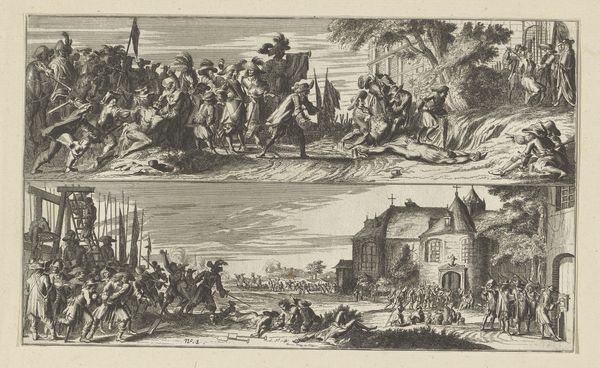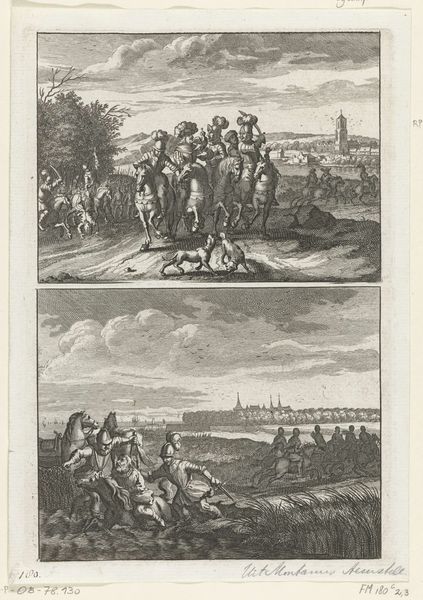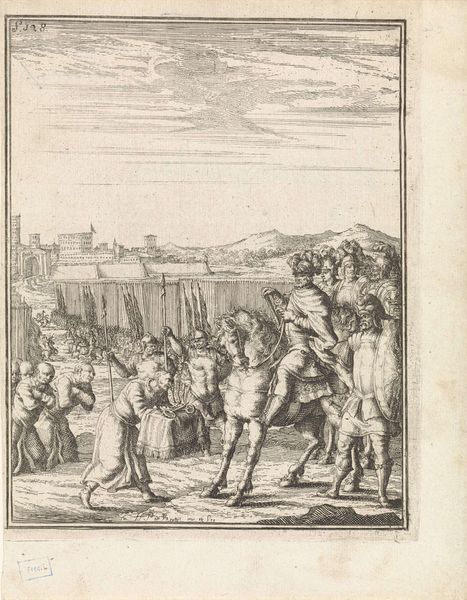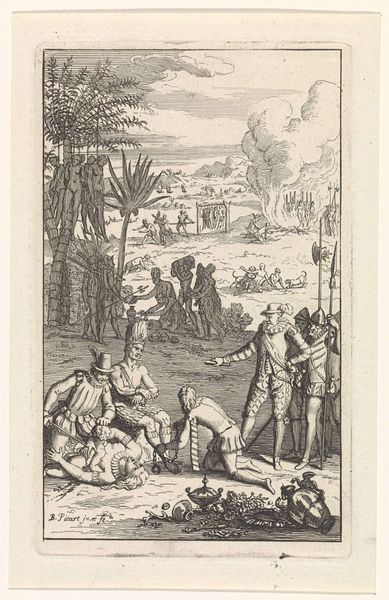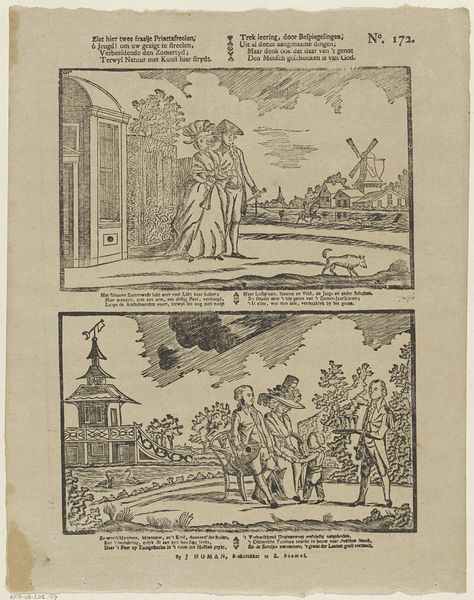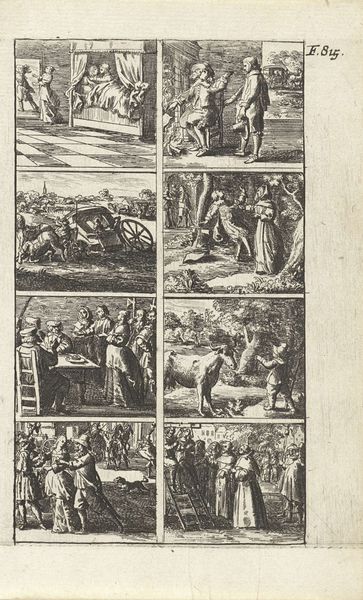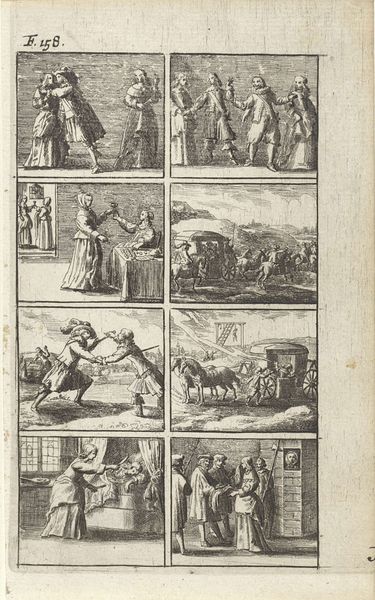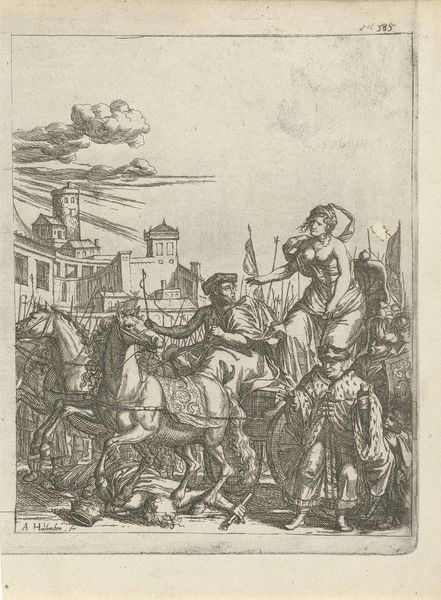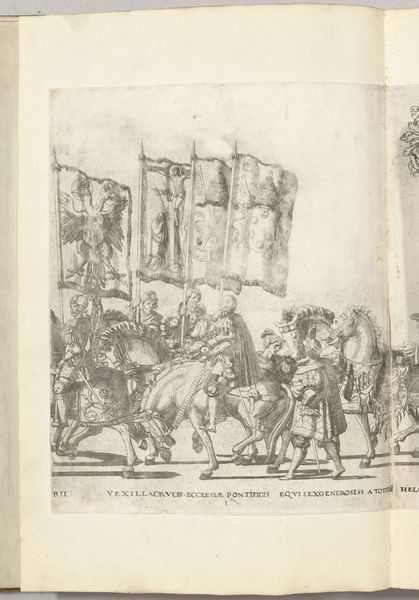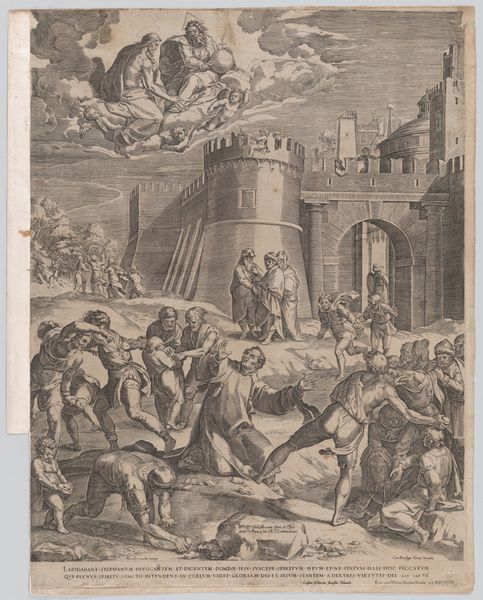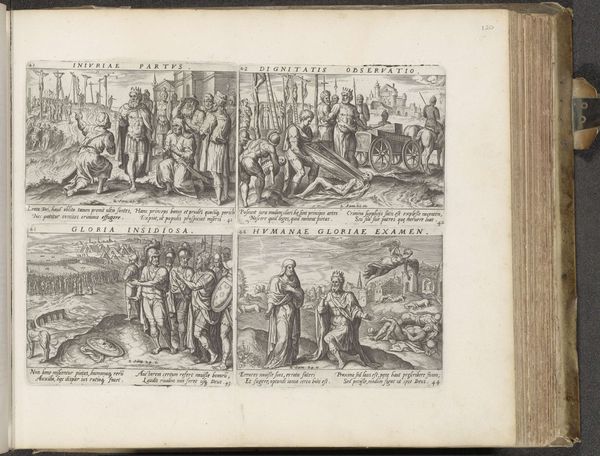
print, engraving
#
narrative-art
#
baroque
# print
#
pen sketch
#
history-painting
#
engraving
Dimensions: height 154 mm, width 96 mm
Copyright: Rijks Museum: Open Domain
Curator: Let’s take a look at "Tekstblad bij boekillustratie" or "Text page for book illustration" created around 1723 by Jacobus Verheyde, using engraving techniques. What strikes you initially about it? Editor: It’s bleak. Even though it's small, perhaps a book illustration as suggested by the title, there is an unsettling quality in its composition. It has a grainy, almost oppressive feeling, and evokes violence. Curator: The division of the illustration into four quadrants constructs a fascinating visual syntax, doesn’t it? The sequence appears to dictate a narrative flow across time, with each section acting as a visual signifier within the overall symbolic framework. Note the detail despite the work’s modest dimensions and its Baroque lineage, marked by dynamic movement and intense emotionalism. Editor: The intense rendering of action, definitely. You see bodies being contorted. The scene in the bottom left shows figures being impaled; people throwing stones. But focusing on its material, as an engraving, I am curious about the labor. How many hands, beyond the artist's, contributed to its existence, from the production of the paper to the distribution of the book itself? Curator: A valid point. What about the way Verheyde manipulates the linear elements and creates depth, which certainly speaks to a mastery of the engraving medium, doesn’t it? The precision involved in etching such intricate lines would be exhausting for even a skilled engraver, speaking to intensive processes, craft knowledge, and a trained studio. Editor: Absolutely. This speaks to production beyond individual mastery. What I keep circling back to is this relationship between labor, tools, and dissemination of knowledge – the socio-economic implications of print. Considering the book this accompanied, what messages were reproduced and distributed because of this particular configuration of craft and distribution? Curator: The visual clarity almost amplifies the depicted violence; the artist renders these scenes accessible to audiences near and far in their immediate moment, yet it feels both intimate and distant, perhaps heightened by its Baroque qualities. It is quite compelling once we recognize these complexities. Editor: I agree. Investigating these layered dynamics beyond aesthetic impressions allows for critical interpretation – to really excavate the material circumstances under which it emerged, who profited from the creation and dissemination of such images, to address historical and contextual questions around the work. It makes the piece feel more relevant.
Comments
No comments
Be the first to comment and join the conversation on the ultimate creative platform.
